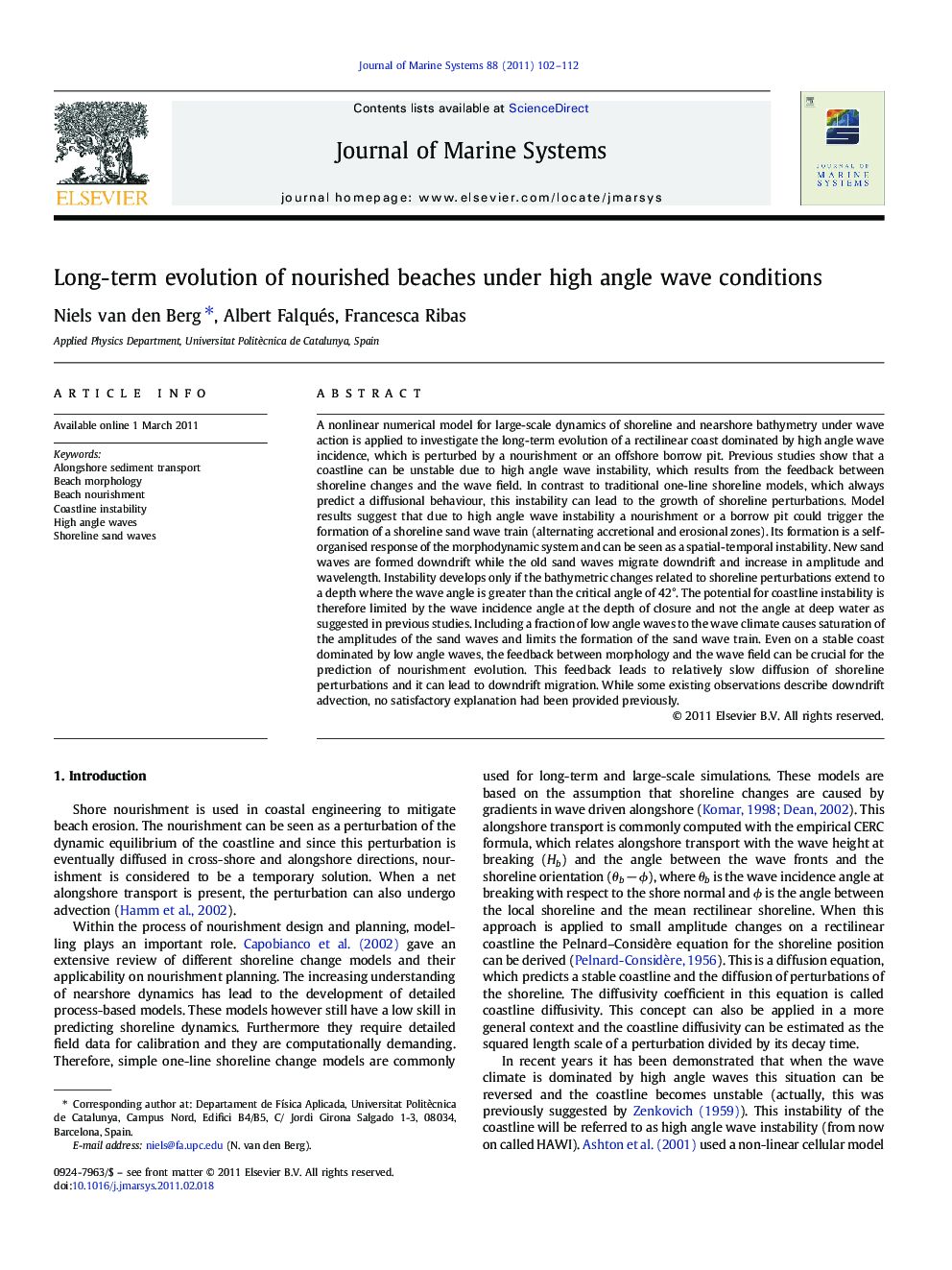| کد مقاله | کد نشریه | سال انتشار | مقاله انگلیسی | نسخه تمام متن |
|---|---|---|---|---|
| 4548442 | 1327905 | 2011 | 11 صفحه PDF | دانلود رایگان |

A nonlinear numerical model for large-scale dynamics of shoreline and nearshore bathymetry under wave action is applied to investigate the long-term evolution of a rectilinear coast dominated by high angle wave incidence, which is perturbed by a nourishment or an offshore borrow pit. Previous studies show that a coastline can be unstable due to high angle wave instability, which results from the feedback between shoreline changes and the wave field. In contrast to traditional one-line shoreline models, which always predict a diffusional behaviour, this instability can lead to the growth of shoreline perturbations. Model results suggest that due to high angle wave instability a nourishment or a borrow pit could trigger the formation of a shoreline sand wave train (alternating accretional and erosional zones). Its formation is a self-organised response of the morphodynamic system and can be seen as a spatial-temporal instability. New sand waves are formed downdrift while the old sand waves migrate downdrift and increase in amplitude and wavelength. Instability develops only if the bathymetric changes related to shoreline perturbations extend to a depth where the wave angle is greater than the critical angle of 42°. The potential for coastline instability is therefore limited by the wave incidence angle at the depth of closure and not the angle at deep water as suggested in previous studies. Including a fraction of low angle waves to the wave climate causes saturation of the amplitudes of the sand waves and limits the formation of the sand wave train. Even on a stable coast dominated by low angle waves, the feedback between morphology and the wave field can be crucial for the prediction of nourishment evolution. This feedback leads to relatively slow diffusion of shoreline perturbations and it can lead to downdrift migration. While some existing observations describe downdrift advection, no satisfactory explanation had been provided previously.
Research Highlights
► Large-scale shoreline dynamics are studied with a nonlinear morphodynamic model.
► The model includes the feedback between shoreline changes and the wavefield.
► Dominant high angle wave incidence gives rise to shoreline instability.
► Under those conditions, nourishments could trigger growth of shoreline sand waves.
► For low angle waves, feedback leads to relatively low diffusion rate and migration.
Journal: Journal of Marine Systems - Volume 88, Issue 1, October 2011, Pages 102–112